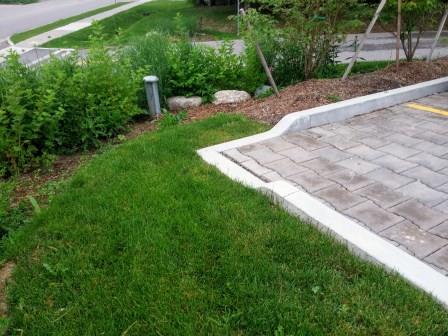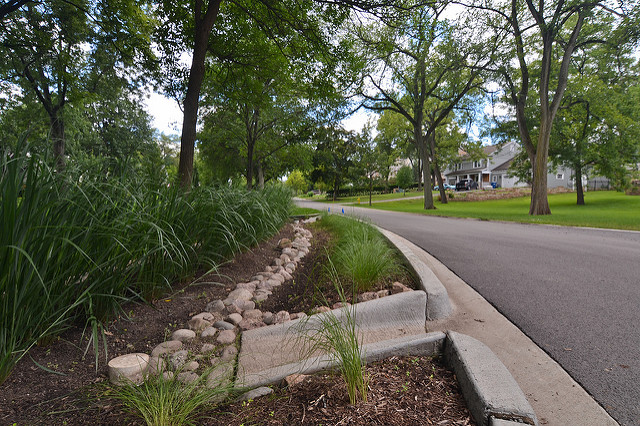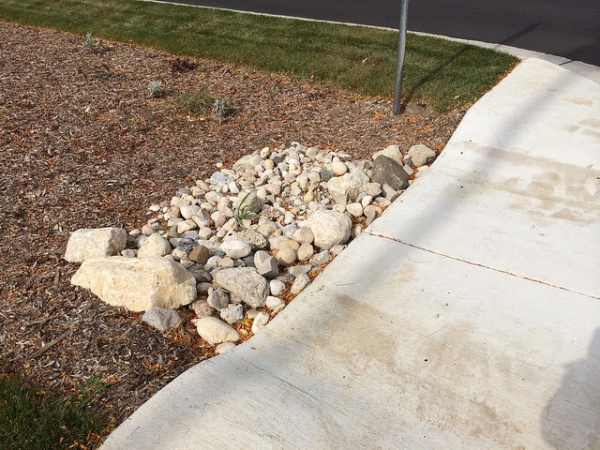Difference between revisions of "Curb cuts"
Jenny Hill (talk | contribs) |
Jenny Hill (talk | contribs) |
||
| Line 7: | Line 7: | ||
==Example== | ==Example== | ||
| − | A curb cut of | + | A curb cut of 3 m is proposed as an inlet for an offline bioretention cell receiving runoff from an adjacent roadway. The gutter and the curb are made from smooth concrete with Manning's 'n' = 0.013. The x-slope is 3% and the longitudinal slope of the road is 2%. The design storm produces flow of 0.08 m<sup>3</sup>/s. |
| − | |||
| − | |||
| + | The width of inlet to capture 100% of this flow is:: | ||
| + | <math>W_T=0.817\times(0.08)^{0.42}\times(0.02)^{0.3}\left (\frac{1}{(0.013)\times(0.03)}\right)^{0.6}</math> | ||
Revision as of 01:13, 29 September 2017
Sizing[edit]
To completely capture linear flow travelling along a gutter perpendicular to a curb inlet, the inlet must be of width::
Where the intention is to capture only a proportion of the flow, the ratio of flow entering the curb inlet may be calculated::
Example[edit]
A curb cut of 3 m is proposed as an inlet for an offline bioretention cell receiving runoff from an adjacent roadway. The gutter and the curb are made from smooth concrete with Manning's 'n' = 0.013. The x-slope is 3% and the longitudinal slope of the road is 2%. The design storm produces flow of 0.08 m3/s.
The width of inlet to capture 100% of this flow is::
Curb cuts Gallery[edit]
Curb cut into a bioretention facility in Hinsdale, IL.
Decorative aggregate in the center of the facility reduces erosion and dissipates power inflow around the inlet area. A monitoring/maintenance well can be seen in the foreground.
Photo credit: CNTCurb cut into a bioretention facility in Brown Deer, WI.
Aggregate is used to reduce erosion around the inlet area.
Photo credit: Aaron Volkening





